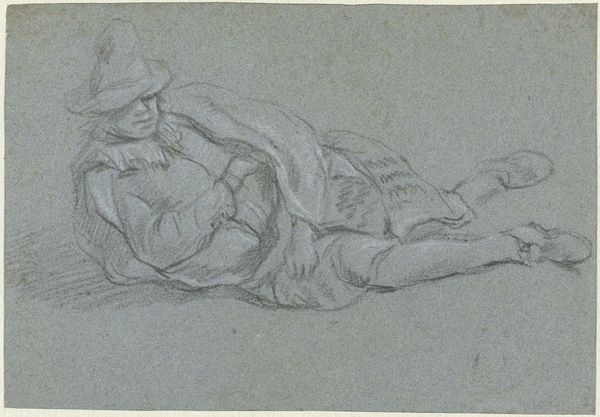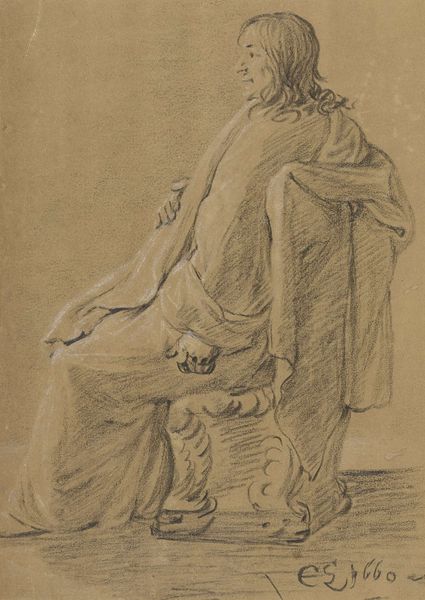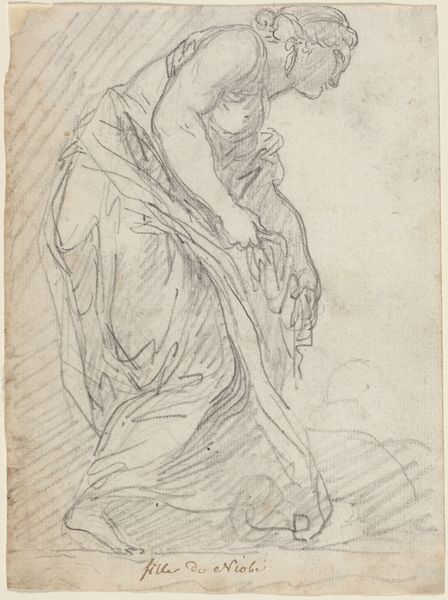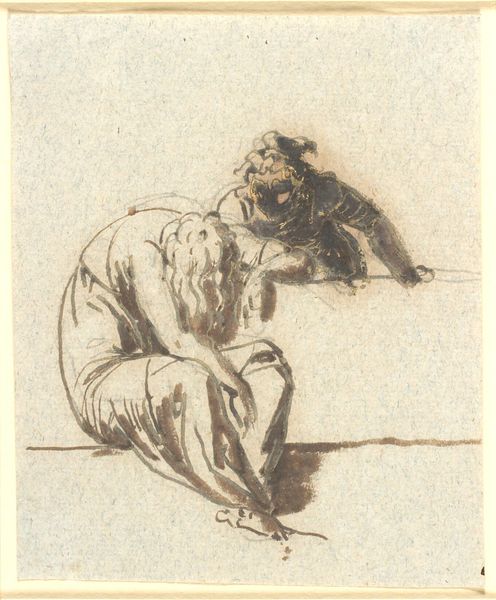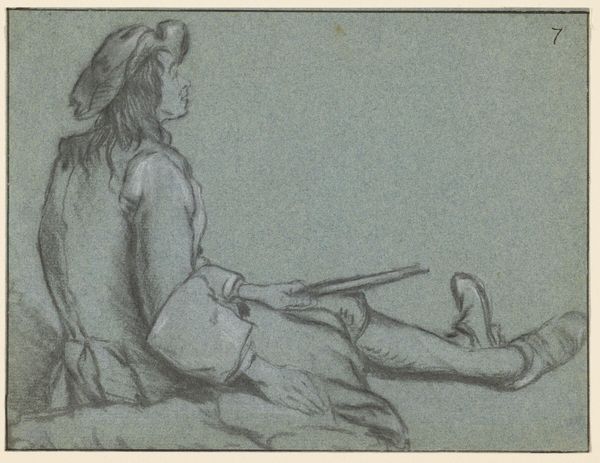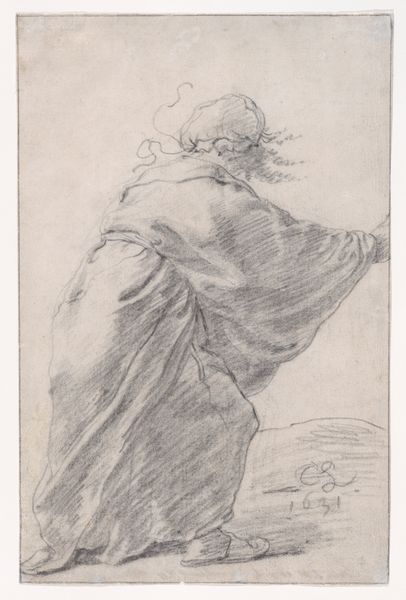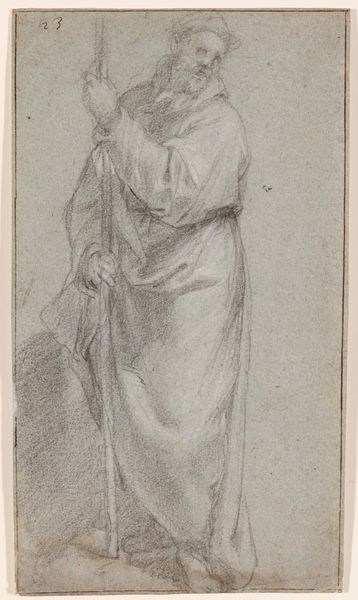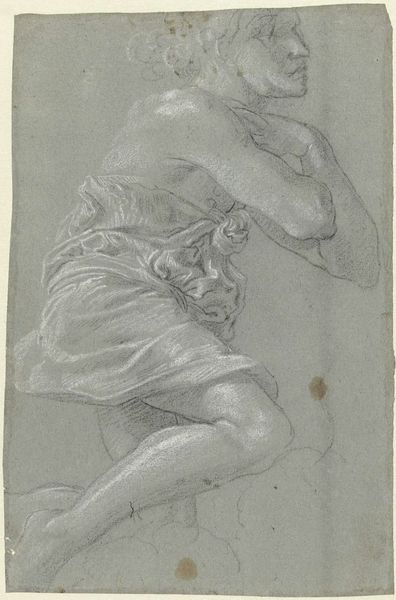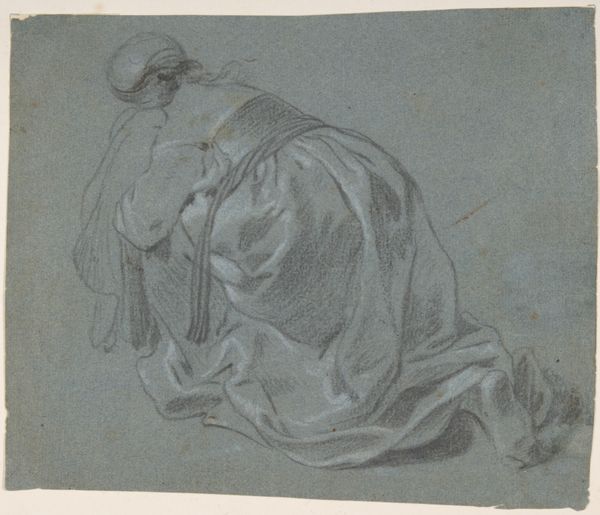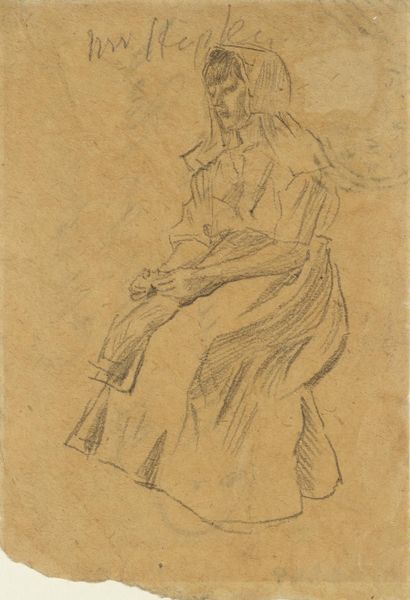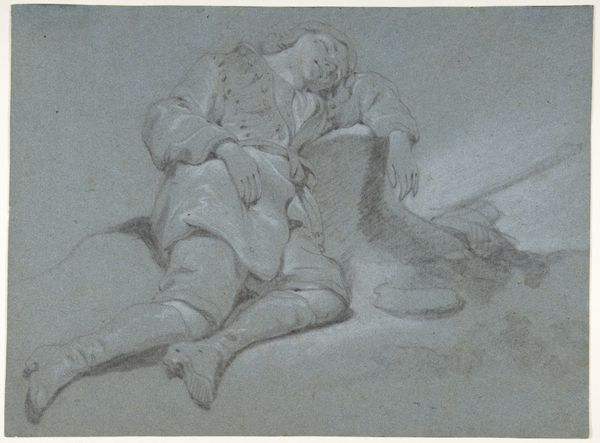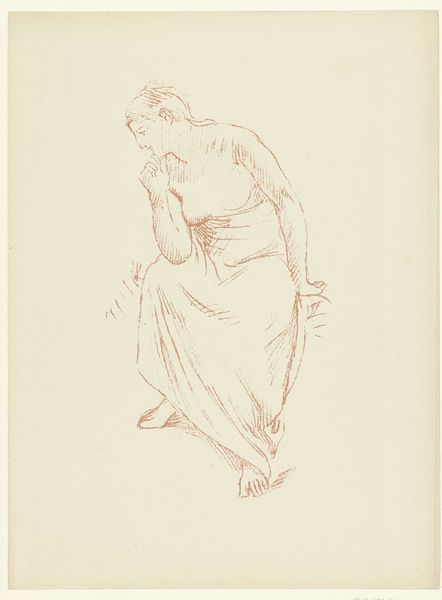
drawing, pencil
#
portrait
#
pencil drawn
#
drawing
#
pencil sketch
#
figuration
#
pencil drawing
#
pencil
Dimensions: height 174 mm, width 228 mm
Copyright: Rijks Museum: Open Domain
Giovanni Battista Tiepolo sketched this drawing of a seated woman with chalk on paper sometime in the 18th century. Look at how the chalk is applied in varying degrees of pressure and thickness to create a range of tones and textures, from the soft fabric of her dress to the more defined contour of her body. The use of chalk allowed Tiepolo to work quickly and spontaneously, capturing the essence of the figure with a remarkable economy of means. Chalk enabled the artist to achieve subtle gradations of light and shadow, creating a sense of volume and depth on the flat surface of the paper. While chalk might not have been considered as valuable as other media like oil paint, it allowed for a looseness that became valued in its own right. By considering the material properties of chalk and the techniques employed by Tiepolo, we can gain a deeper appreciation for the skill and artistry involved in this seemingly simple drawing. It's a reminder that the value of an artwork extends beyond its subject matter, and resides also in the artist's mastery of their materials.
Comments
No comments
Be the first to comment and join the conversation on the ultimate creative platform.
